told un

















The magazine, untold, is the product of a collaboration between two professors, one in journalism and the other in history, and their students at Washington and Lee University during the winter term of 2023.
Late last year, I decided that I wanted students in my Editing for Print and Online Media class to create a magazine as their final project. But I needed content. I found it in the History Department at W&L.
Professor Romina Green Rioja, who teaches Historical Memory in Latin America, agreed to my proposed collaboration: My Editing class would use her students’ essays as the basis for designing and creating a magazine that delved into the topic of historical memory.

The study of historical memory emerged in the 20th century as a method for scholars to understand collective identities and experiences. Later, it became a way to explain collective and historical trauma.
At the start of the term, my Editing students began reading the essays that Professor Green’s students wrote that chronicled their paths over the next 12 weeks to the realization that there is often more to history than what’s in history books.
My Editing students learned along with the history class about indigenous people whose stories were erased and voices were silenced by conquerors who told only one side of the story of the development of several nations.
The magazine in your hands depicts the magic that occurs when students immerse themselves in compelling content that ignites creativity. My Editing students developed the magazine from scratch. As a group, they made decisions that determined its look and feel, from its size and shape to its fonts and color schemes.
They also experimented with artificial intelligence-generated images to create the photograph on the magazine’s cover. A student asked Open AI’s DALL-E deep learning model to produce a “photorealistic over-the-shoulder image” with an “archival feel” of a student reading a book.
I hope you, the reader, are as proud as I am of the journalism and history students for their commitment to tackling such an important subject that affects people around the world.
Graciela Gaviria
Carly Snyder
Stef Chiguluri
Fraley Williams
Lilah Kimble
Archita Aggarwal
Jak Krouse
Ryan Raicht Special thanks to Michael Todd, manager of technical operations for the W&L journalism department


“Historical memory studies emerged in the 20th century as a method to understand collective identities and experiences, and, later, as an avenue to articulate collective and historical trauma. This class will examine the complex role of historical memory in 19th and 20th c. Latin America. We will study collective, official, counter, and living memory as analytical concepts, as well as specific memory battles and historical trauma. Readings explore the impact of Holocaust memory studies in Latin America and the erasure of indigenous and African stories from national histories. However, a special focus will be placed on how historical memory is employed as a counter-memory from below to institutional histories about the military regimes of the 1970s and 1980s. In the final part of the course students will learn how and why historical memory and human rights has become the political language of expanding democratic rights.”
— Professor Green’s course syllabus.
DESIGN BY GRACIELA GAVIRIAQ: What is historical memory and why is it a relevant field of study?

A:Wehaveaverybig systemthatisconstantly erasing.Andtheonlyway todosoisthroughthe same methods of historical memory.
Itʼsoralhistorypassingon, andyoujusthopethatthe nextgenerationalsogets exposed.
Q: Where does your interest with historical memory come from?
A:Mygrandmothermadea veryconsciousefforttotell mesinceIwasverylittleof these stories. And in some ways,theycouldseemlike storiesyoushouldnʼttell childrenbecausetheyʼre abouttorture,theyʼre aboutrape,theyʼreabout fear.Andsomepeopleare afraidtotellthestories, andIdefinitelyhavefamily members and friends who werenevertold,right?
Butmygrandmother justthoughtitwasher politicaldutytotellme, eventhoughshewasnot ideologicallycommitted.

Dr. Romina Green Rioja is an assistant professor of Latin American History at Washington and Lee University. She teaches the class on historical memory this magazine explores.








Q:What is your goal for this class?


A:Itʼsnotjustastoryaboutthe horriblethingsthathappenedin LatinAmerica,butitʼshowhistorical memoryhasbecomeastrategyof resistance in Latin America. Itʼs one thatweusetobringhumanrights abuserstojustice.Itʼsonethatwe alsouseintheeverydayintermsof reconnectingwithotherformsof silencestothepointwhereinLatin Americawedonʼtsayhistorical memory.Wejustsaymemory.

Q:We noticed reading the essays that there’s something that is woven into the class, which is just teaching people to be better listeners. How can we learn to be better listeners?
A:Inasense,topassonhistorical memories,thestrongestpartof historicalmemories,theoralaspect, isthetellingofthestoriesinthe passingofthestories.Andinmany instances,itmeanslistening.


Itmeansnotjustlisteningto information,buttoemotionsand whatitmeanstopeople.AndI sometimes think about that when Iʼmteaching.Iwonderifstudents areonlyinterestedintheoutcome andthespecificnotionsthatneedto be learned.


Butalso,thereisacertaintype oftextualemotionthatisbeing passedthroughthatmattersin thesewritingsandinthesestories thatishardtoteach.Thatʼswhyyou sometimeshavetokeeponreading thingsoverandoveragain,that tellthestories,right?Itʼsnotso muchabouthowmanypeopledied thatmatters,butitmattershow theydied,howtheydisappeared, andhowpeoplethenconstruct memoriesofpeoplethatcannottell their stories.
 Professor Green teaches her class of 14 undergraduate students.
Professor Green in an interview for this magazine.
DESIGN BY FRALEY WILLIAMS
Professor Green teaches her class of 14 undergraduate students.
Professor Green in an interview for this magazine.
DESIGN BY FRALEY WILLIAMS
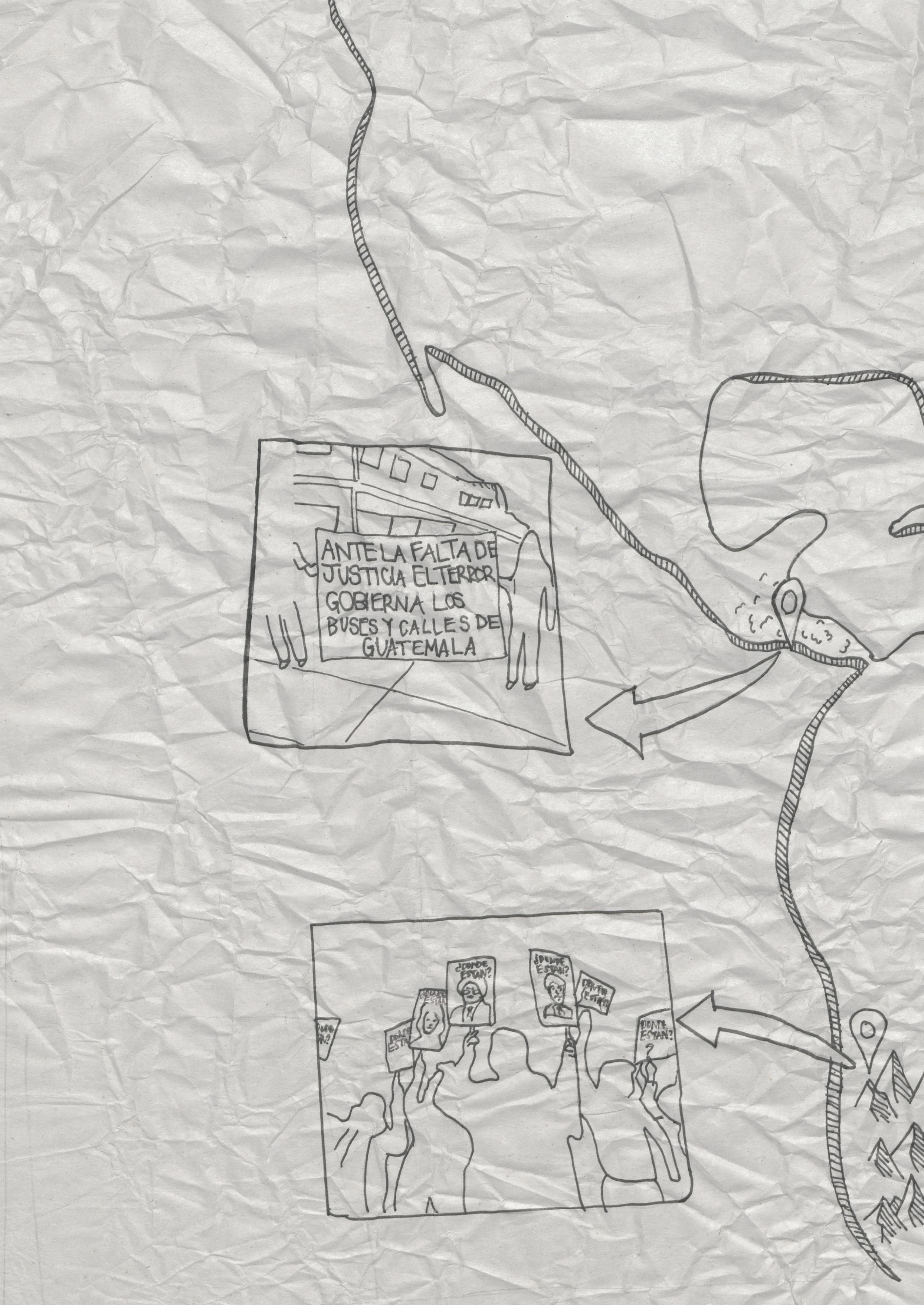


In the account of Rigoberta Menchú captured in “I, Rigoberta Menchú,” she details the abysmal struggles she, her family, and her entire community must face in the worsening living conditions created by the systematic abuses of power. Her father would say that “the rich have become rich because they took what our ancestors had away from them, and now they grow fat on the sweat of our labor.” The description of the lives they would lead down on the fincas is one of grueling work, little pay, and endless traps to eat up what little money they may have been made. Her family would spend months working, only to have their money whisked away by supposed debts that they never could have incurred, having to watch their payments
In a concealed manner, the landowners found a legal loophole to ensure virtual slavery and zero profit for migrant workers.
This insidious creation upset me during the discussion of the indigenous manipulation because the harder people like Menchú’s parents worked the further behind they got.
What stood out to me was the sheer brutality of indigenous experiences that are difficult to imagine.

Since Elisabeth Burgos-Debray, the interviewer that directs Menchú’s telling of her narrative, is an anthropologist by training, she was able to ask questions that guided Menchú within the context of the interview.
sink into the pockets of landowners. The rage that only centuries of underhanded tricks can culminate in a population is taken and transformed into organized movements against systematic oppression that Menchú and her community collectively produce and embody. The colonial narrative of general inferiority is taken, spun, and hurled back against the government as a projectile force that is ready to defend its traditions and cultural practices. Even in the circumstance that they must temporarily give up those traditions in order to protect them, the indigenous communities took up the weapons of their enemies (in this case, absorbing biblical texts and imagery and learning the Spanish language), and used them as tools to effectively fight the battles they were ensnared in.
—Elena LeeTo fully understand the concept of collective memory within the murder of the Quiché [now spelled K’iche’] and other Guatemalan indigenous peoples, Burgos’ anthropological analysis elucidates that way in which an individual, Menchú, can tell the story of her people.
The lengthy descriptions of the Quiché society and culture (i.e., marriage, birth, death) seem a bit overwhelming at first glance.
As the text transitions to the memories of violence and family upheaval, Burgos’ emphasis on anthropology allows the reader to recognize why Menchú has such a fierce loyalty and attachment to her community.
Another event caught my attention: the Chixoy Massacre of 1982. A village of indigenous people, including men and women, young and old, were murdered by the Guatemalan military and security guards. The reason was the government wished to build a hydroelectric dam near their residence. Instead of negotiation and evacuation, they decided it was better to just kill them off once and for all. This massacre gave me a glimpse of the social status of the oppressed. They were treated as if disposable. Their voices were silenced by the powerful hand of military force.
—Helen LiuIndigenous people had to work extremely hard to not only provide for their families but also to protect themselves from white landowners and the military. This has been the case for generations and these historical memories have been passed down. Because these historical memories are often associated with trauma, this can be a source of bonding for those in the community. I wonder if this is why communities are so close because they have this collective experience with significant traumas?
—Hannah ShiffertMenchú grew into sensibility at a very young age. Her environment was not of the comfortable type, with hard work on country plantations known as fincas, as well as constant traveling between their workplace and their home in the Altiplano. Her people were also treated with disrespect. Pesticides were often sprayed upon them and they were kept under constant hard labor.

Indian labor was treated as cheap workforce without their basic human rights. When Menchú’s little brother passed away on a finca, the family did not even know what to do with the body. Burial on the fincas’ grounds would cost more than they could afford; bringing him back to the far Altiplano was not an option either. Roots towards Menchú’s political activism can be traced very early in the testimony. The seed of rebellion grows strong in the soil of inequality and oppression.
—Helen LiuOver 80% of the fatalities in the civil war were Mayan individuals. Therefore, these victims couldn’t share the memories of the Mayan genocide, and Menchú’s story breathed life into the memories of deceased individuals like Dona Petrona Chona. Questioning the validity of texts is always essential in establishing an accurate historical account. However, after Menchú won the Nobel Peace Prize, intense criticism developed due to the claim that she fabricated some stories. When one focuses on questioning the collective memory in Guatemala, one undermines the purpose of Menchú’s book. Readers need to acknowledge the intricacies of the Mayan culture and how the Ladinos, the antithesis of their society, subjected the Mayan to genocide.
Guatemalans looking at whether human rights are being protected see corporations like the United Fruit Company, which are working with the United States and the Guatemalan government to strip indigenous peoples of their land. Through that historical action, which has allowed the United States to have plenty of fruit, they have taken away Guatemalans’ lands, right to dignity, right to food security, and many more rights they should be afforded … The cycle of western involvement in creating dictatorships or weak governments has been difficult to break. However, Latin America seemed to have been moving toward social reforms in the early 2020s with left-wing presidents’ being elected. Some, like Peru, have failed spectacularly, but other new leftwing presidents are working to deliver the reforms they promised. Thanks to publicity from figures like Menchú, Guatemala reached a reckoning of sorts with its truth commission in the 1990s exposing the genocide of Mayan indigenous peoples and human rights abuses. After the initial reform, the government has stalled in its human rights reforms. If the elites of the country have no motive, such as a rebellious group threatening the status quo, they will not make the necessary changes to protect their people.
A genocidal crisis, such as the one in Guatemala in the second half of the 20th century, inflicts insurmountable damage on the collective memory of the victims.
There is little help found in the Universal Declaration of Human Rights (UDHR) when it comes to remembering the victims. The discrepancy between the mention of ensuring that stories are passed on to others in the declaration and the actual need for victims of human rights abuses to feel heard and have a space in the national identity is vast. Where the UDHR falters, restorative justice can provide a space and means of promoting the survival of a narrative. It all comes down to tackling individuals’ beliefs about the victims and changing social structures which perpetuate harm, even after change in perspectives and culture have occurred.

The survivors are now embedded in a world of traumaandastruggletofully telltheirperspective,even decades later.
—Evan ClarkIndigenous Guatemalan women celebrate the conviction of former dictator Efraín Ríos Montt for the genocide of indigenous tribes in the 1980s. Photo courtesy of Trocaire from Ireland, CC BY 2.0 via Wikimedia Commons.
 Matewan was the site of the Battle of Matewan in May 1920 during a coal miners’ strike. Photo by Sydney Poore and Russell Poore, CC BY-SA 4.0 via Wikimedia Commons.
Matewan was the site of the Battle of Matewan in May 1920 during a coal miners’ strike. Photo by Sydney Poore and Russell Poore, CC BY-SA 4.0 via Wikimedia Commons.


 DESIGN
DESIGN


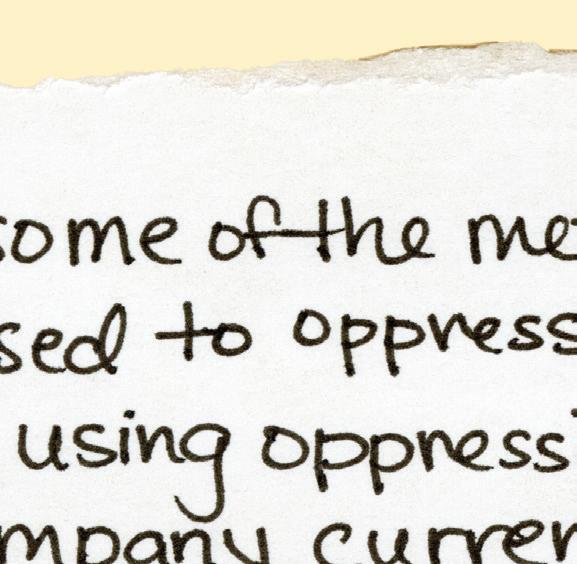




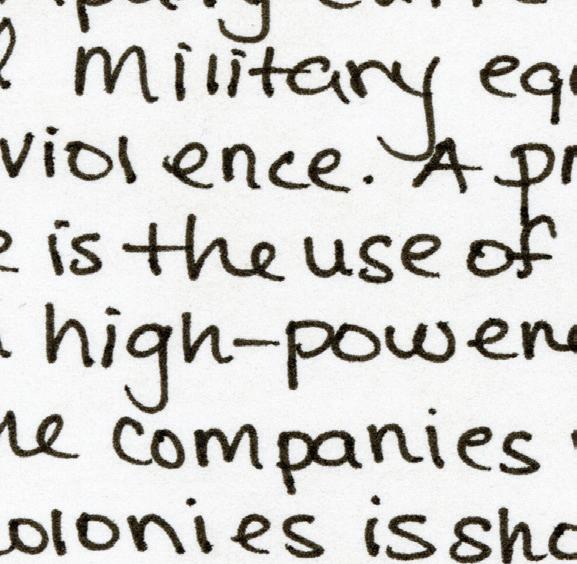


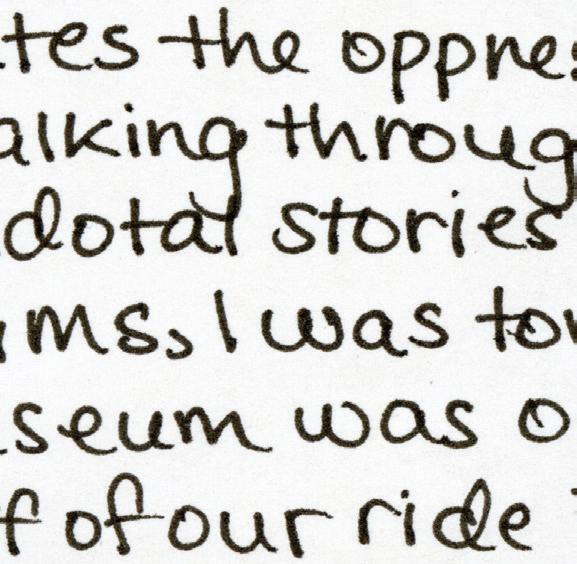


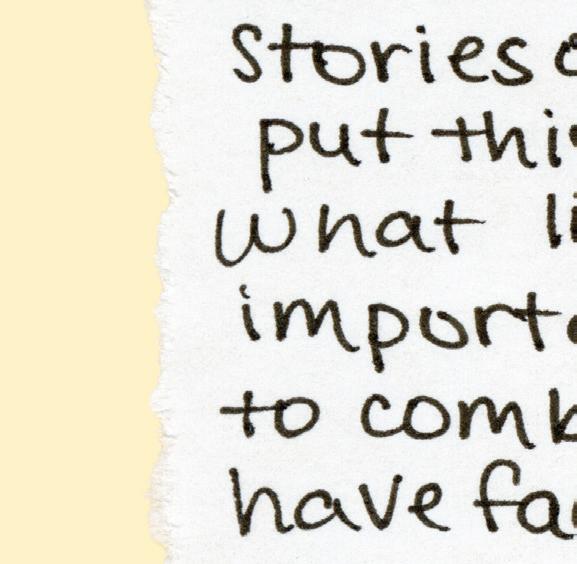

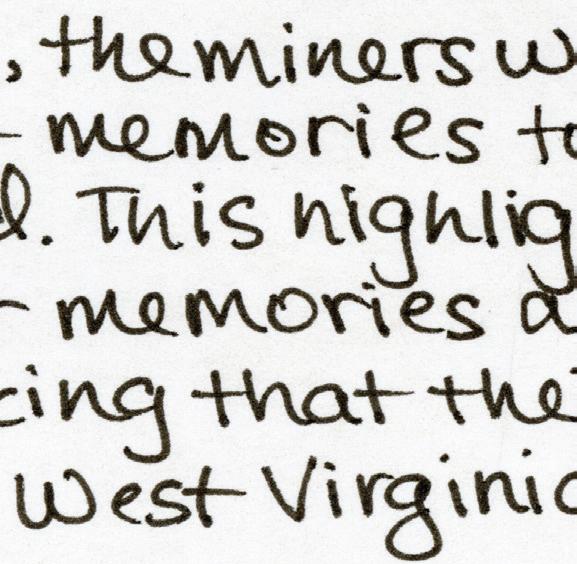




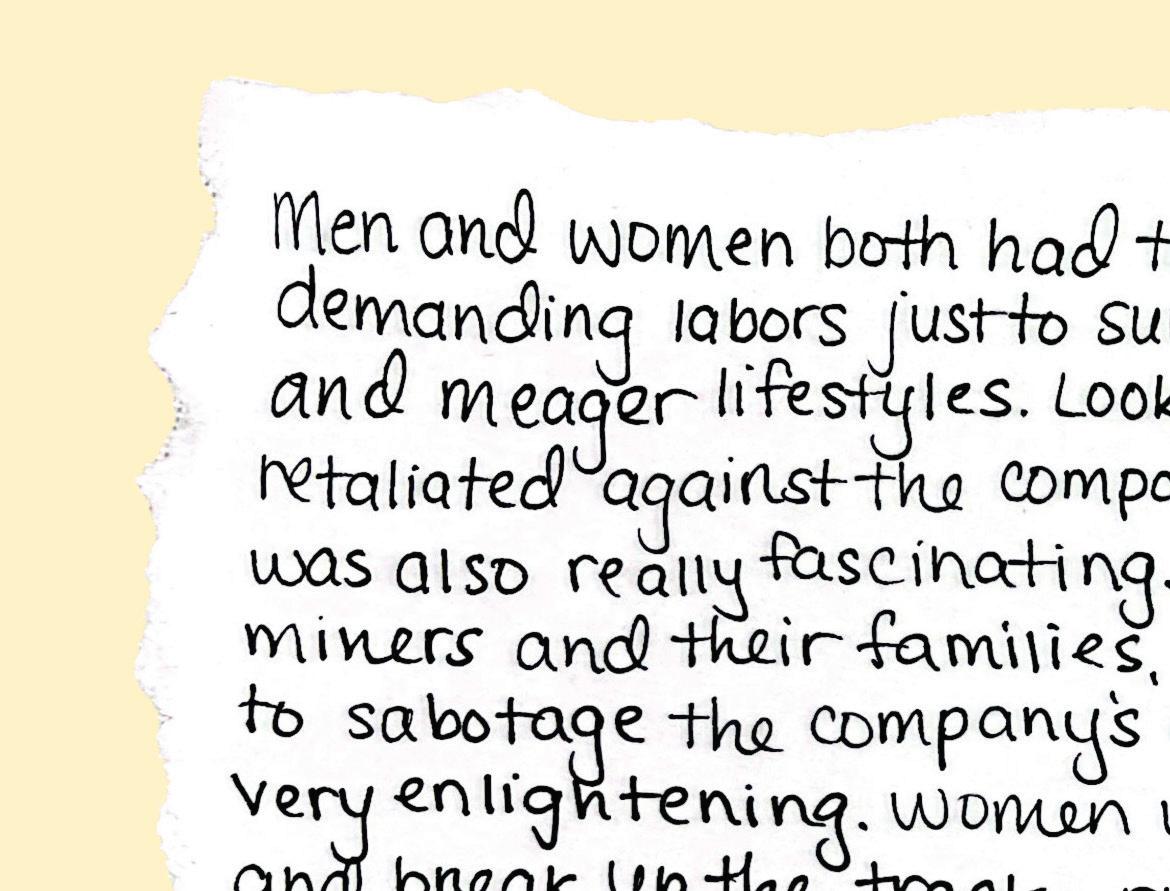
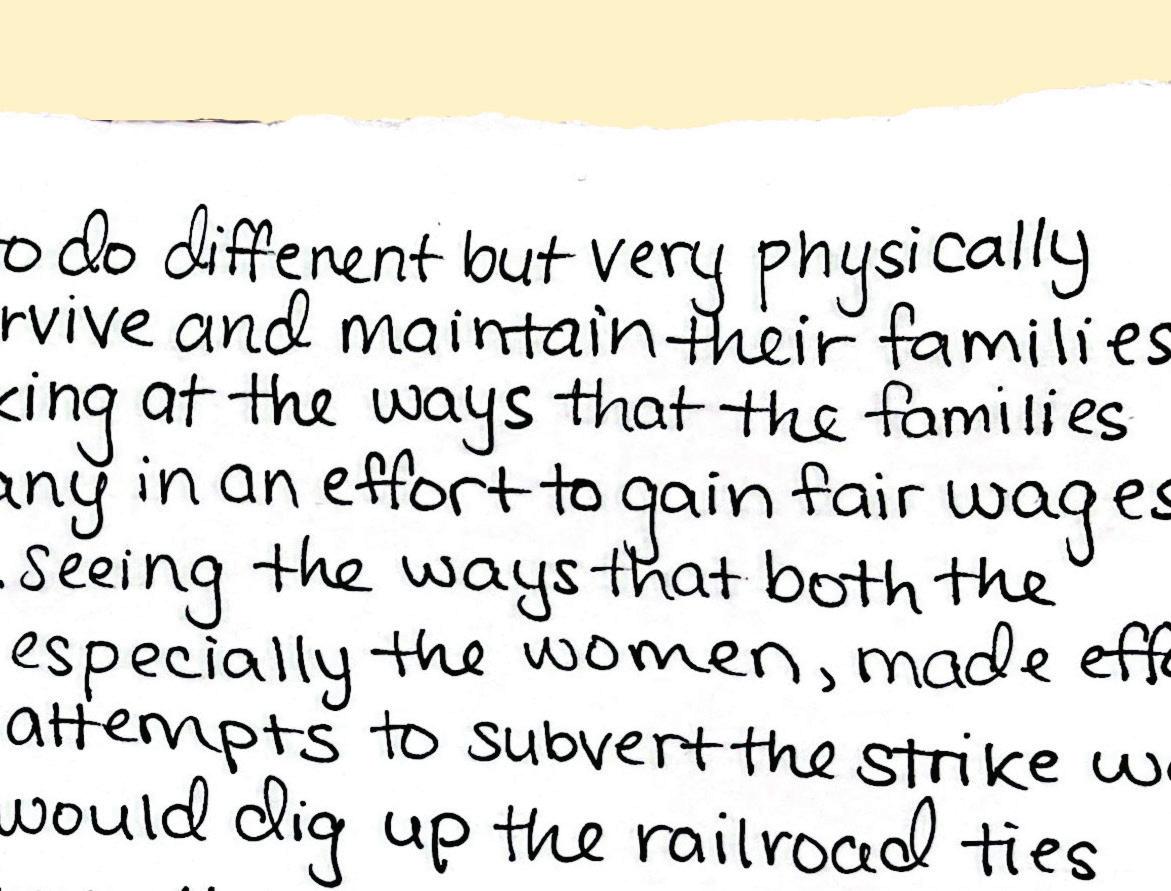


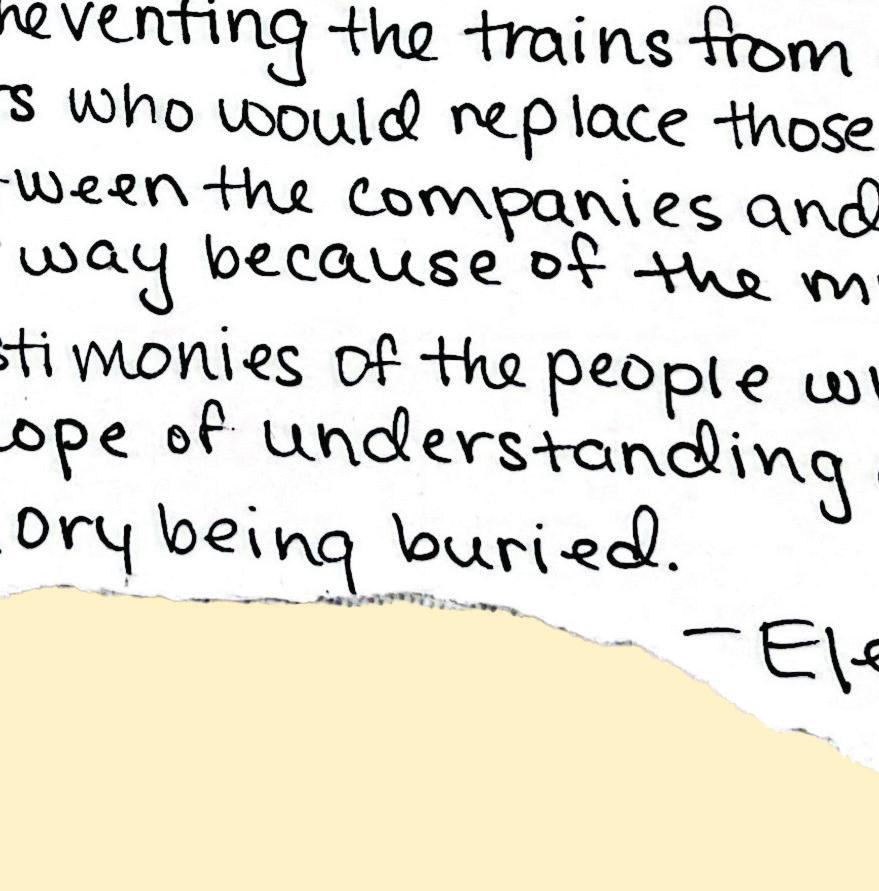
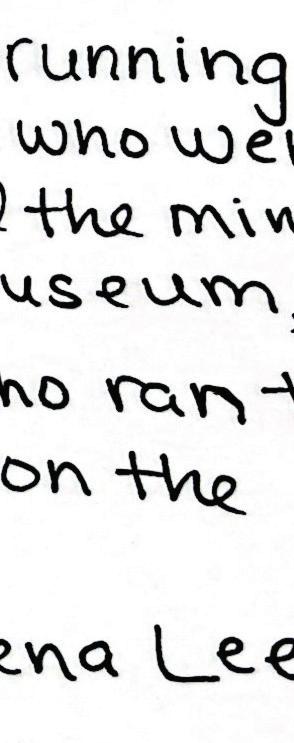


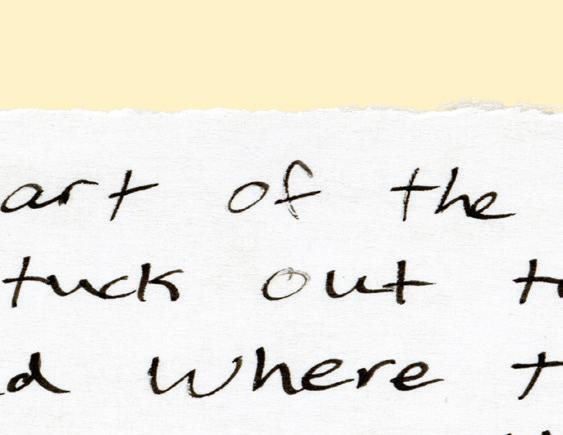






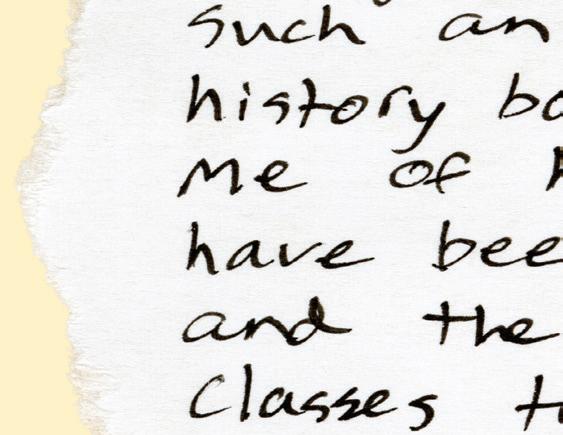






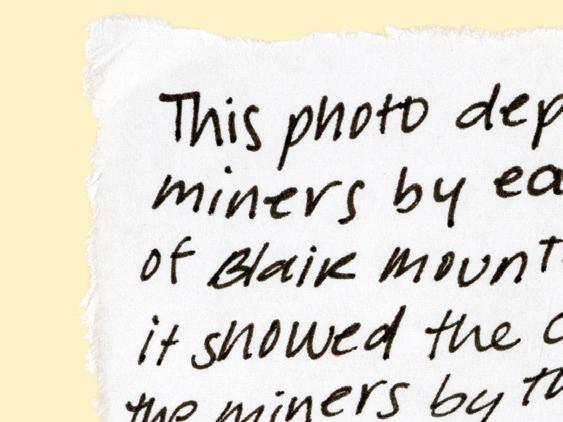






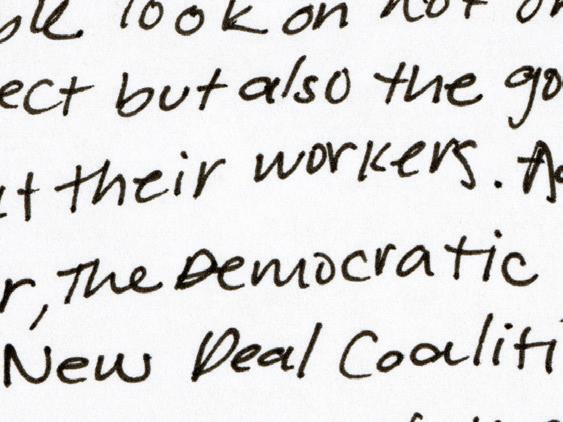






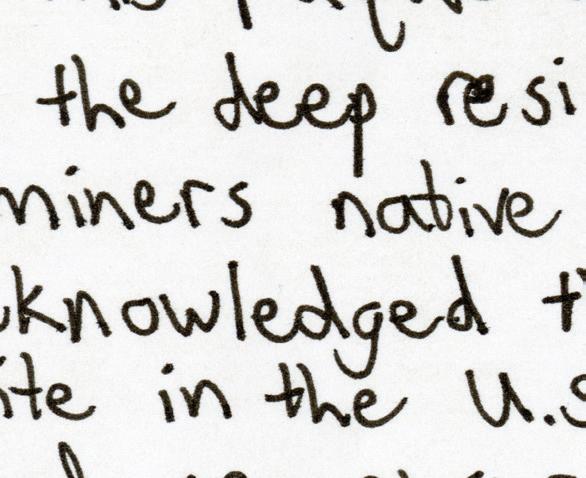

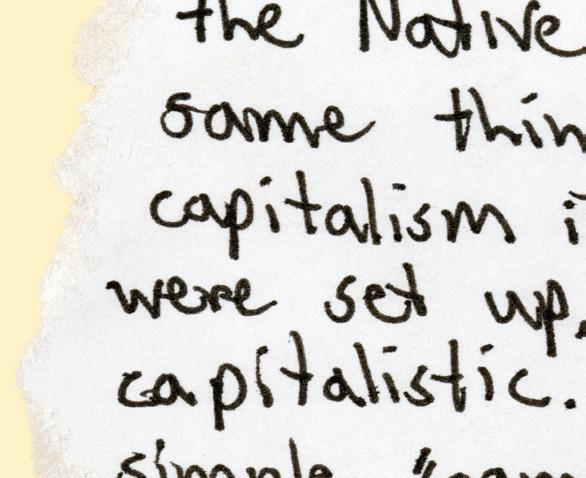


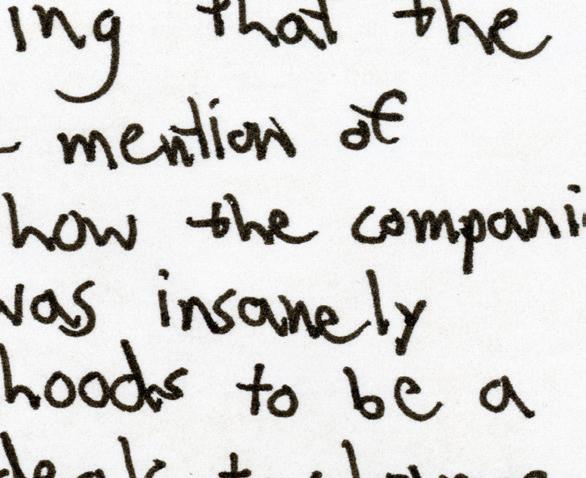


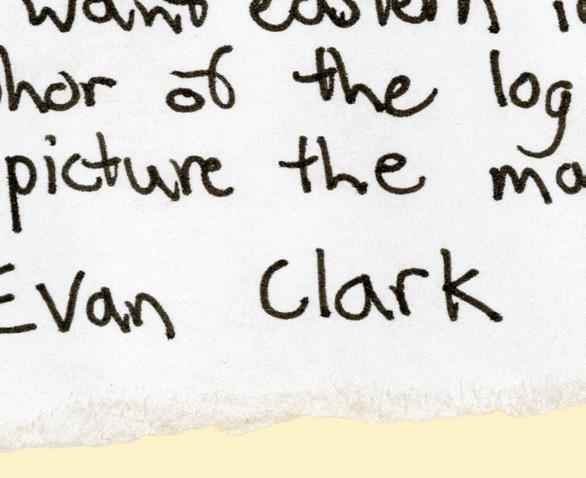




 Unexploded device dropped on miners during Mountain on display at the West Virginia
Unexploded device dropped on miners during Mountain on display at the West Virginia


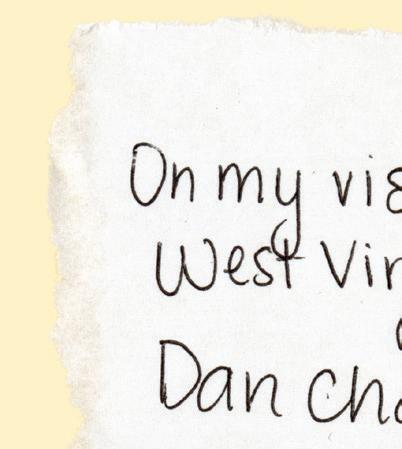



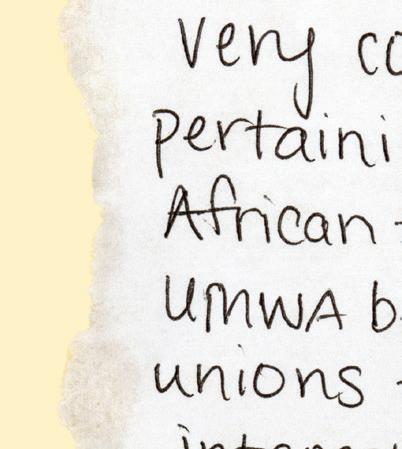

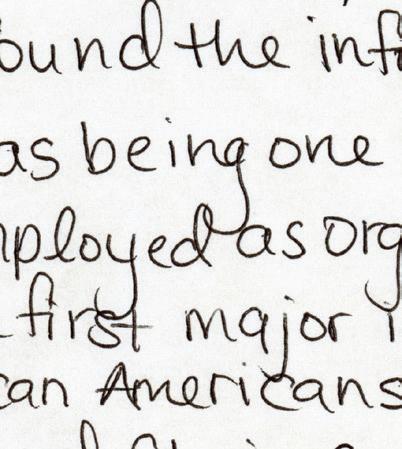


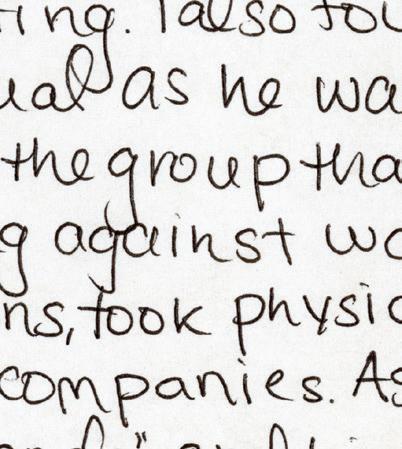









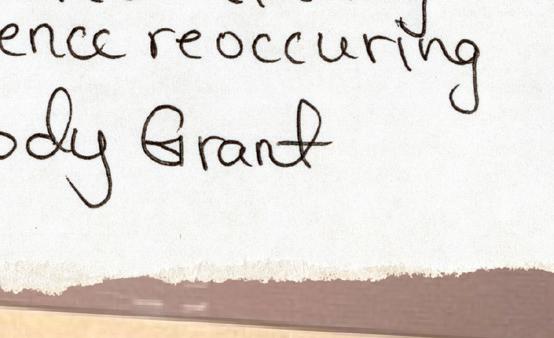


 during the Battle of Blair Virginia Mine Wars Museum.
during the Battle of Blair Virginia Mine Wars Museum.

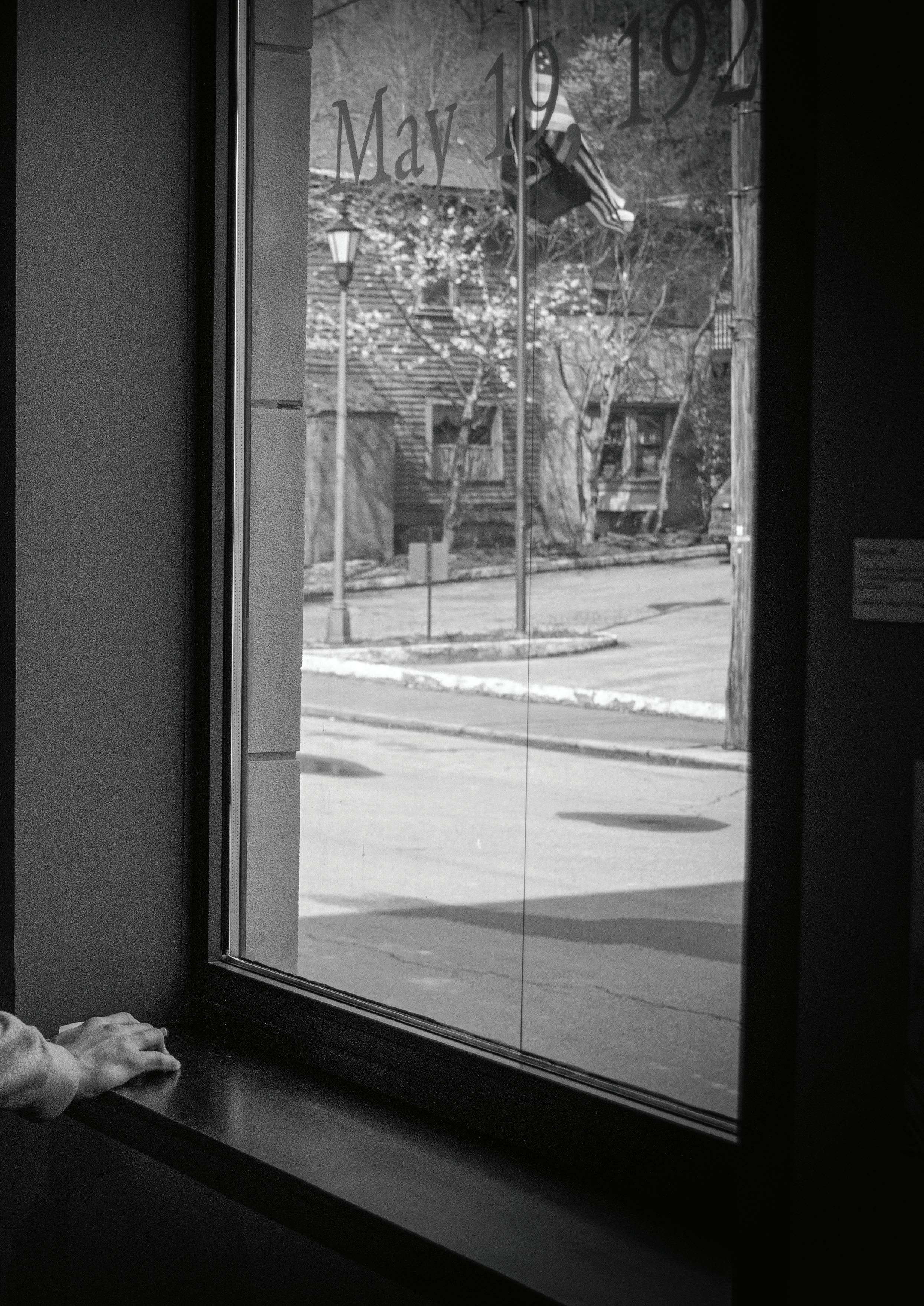 Photo by Ryan Raicht
Photo by Ryan Raicht






 The Mode of Exterminating the Black Army, as Practised by the French, by J. Barlow after Marcus Rainsford, CC BY 4.0 via Wikimedia Commons.
DESIGN BY JAK KROUSE
The Mode of Exterminating the Black Army, as Practised by the French, by J. Barlow after Marcus Rainsford, CC BY 4.0 via Wikimedia Commons.
DESIGN BY JAK KROUSE
Haiti has constantly worked against dominant powers to claim its own narrative. Michel-Rolph Trouillot, a historian of the Haitian Revolution, argued that every step of the historical process allows for what he called “silences,’’ and Haiti is no different. Haiti, as a Black nation, needed to work hard to be taken as a legitimate nation post-revolution. They started as a slave colony for the French.
After an uprising and a successful revolution, Haiti became a nation of former slaves. Due to the racial makeup of Haiti, the global community turned its nose up at the new country. While in other Latin American countries nation-building delegitimized its indigenous and other minority groups, Haiti in its nation-building fought against delegitimization.
The memory of specific people can also be manipulated to alter how groups of people think of someone. In the second chapter of “Silencing the Past” by Michel-Rolph Trouillot, it is mentioned how Haitian rebel leader [JeanBaptiste] Sans Souci is viewed in multiple ways by different groups of people. Trouillot calls it the “Three faces of Sans Souci.”
In one instance, he can be viewed as a revolutionist who stood for a better government and gave his life fighting for Haitian independence. Sans Souci was a former slave but was one of the leaders in the Haitian Revolution and was viewed as a very successful general in the revolt.

However, many view Sans Souci in a different light, saying he was a disobedient soldier, which resulted in his own assassination by a fellow rebel leader. While this narrative leaves out much of Sans Souci’s stories, including the success he had and the people he helped free, it can still be the narrative that many think of when looking at Sans Souci. There is also a third context that can be thought of when hearing that name, a castle. The difference in all these perspectives showcases how indefinite history really is, and how easy it is to alter the narrative of something.
—JackJohnsonA good example of the effects of power from a top-down perspective can be found in the varying memorwwies that are seen within the narrative of twhe Haitian Revolution. Haitian history is often buried behind other revolts that occurred within the late 18th and early 19th centuries.
The American Revolution in 1776 and The French Revolution in 1789 gave rise to a democratic governance system and are the more commonly acknowledged global histories. But the local narrative of the revolution is treasured by Haitians, as is evident in the way that what “[the palace of Sans Souci] might have been is not left entirely to the visitor’s imagination” and that soon enough a local would “force himself upon you and serve as your impromptu guide” while visiting.
There is a sense of pride in a palace “built for a black king” whose walls were meant to serve as “irrefutable evidence of the ability of the black race.” On a national scale, the memories
of the Revolution stem from the knowledge of Henri Christophe [Haiti's only monarch] and the actions of the formerly enslaved Africans in claiming their independence from French colonialism.

Just between these two spheres, the narrative changes entirely, with the national sphere fighting to reclaim it as a fundamental piece of identity.
—Elena LeeBuilt in the early 1900s following the Haitian Revolution, the palace of Sans Souci held King Henry I. He became king in 1804 following Haiti’s declaration of independence and quickly
established a reputation for being “rich and ruthless.” The construction of Henry’s favorite residence, Sans Souci, would claim hundreds of Haitian lives due to the harsh and brutal conditions they were held in.
The palace, though in ruins today, still stands as a stern reminder of his reign and his involvement in Haiti’s history. Unfortunately, a revolutionary within King Henry’s story has nearly disappeared because of inequalities in historical narratives and physical sources. Colonel Jean-Baptiste Sans Souci played an instrumental role in the Haitian Revolution before he was executed by King Henry.
Sans Souci became the leader of a substantial

army consisting of local Haitians and with other allies, they were able to reverse the military situation in the northern part of the country. Later in the revolution, Sans Souci would contest a new revolutionary hierarchy that the future King Henry supported. This tarnished their relationship, eventually leading to Sans Souci’s execution.
Due to King Henry’s power in Haiti, the disappearance of Sans Souci’s memory is a “concrete example of the interplay between inequalities in the historical process.” Henry’s power erased Jean-Baptiste Sans Souci from Haitian history, and the name of his palace serves as a barrier between King Henry’s narrative and the significance of Sans Souci’s role in Haitian history.
The double historicity of subjects is seen straightaway between the palace and the revolutionary, as the dominant memory surrounding this name in Haiti is of the palace, but as Trouillot contests, the palace was named after the revolutionary to subsume his name into the monarchical reign of Henry. This is where a great example of the dual role in history subjects serve — as Sans Souci the revolutionary opposed the monarchical beliefs of Christophe, leading to his eventual assassination, and the ensuing construction of the historical narrative tying the name Sans Souci to the symbol of the only Haitian monarch.
—BlakeRamseyThe French, on the other hand, were able to write horrific stories of being overtaken by the
enslaved. With that, the dominant narrative downplayed the struggle-turned-victory for the enslaved Haitians and instead focused on the unthinkable defeat of the French colonizers.
Europeans and white men resided at the top of the hierarchy while enslaved people from Africa and indigenous people from the Americas resided at the bottom of the hierarchy. Thus, both these groups weren’t seen as equal to the white Europeans, and it was this belief that led to many colonizers being unable to fathom a slave revolution in Haiti because, in their eyes, African slaves weren’t competent enough to revolt. Thus, the idea of a revolution was unthinkable. So, with the history of the Haitian Revolution being unthinkable at the time, due to cultural discrimination present, in the future this unthinkable history would be omitted from our historical memory of the era of revolt against colonization and the creation of new nation states in the Americas. At the time, it was unfathomable to think slaves could revolt and create their own state and thus now it has been omitted from our historical memory.
 —Sam Wise
—Sam Wise
Sans Souci’s ideas were completely erased through Christophe’s and Souci’s roles in the sociohistorical process and the construction of narrative surrounding the name, as Christophe has the power and Souci’s opposition to his hegemony could be erased through the very thing he opposed, conflating anti-monarchical revolutionary sentiment to the monarchy itself.
—BlakeRamsey Burning of Cap-Francais in the 1790s, Saint-Domingue, ou Histoire de ses Révolutions, public domain via Wikimedia Commons.




Arpilleras, Spanish for burlap, are tapestries of colorful fabric scraps and stitching that tell stories. Working-class women in Chile used tapestries to tell their own stories of trauma they experienced while living under a dictatorship. The Catholic Church initiated arpillera workshops in Chile to help families whose relatives had disappeared or were killed, mostly from 1973 to 1990. Creating arpilleras brought together communities. Women also made money when their tapestries were smuggled out of Chile and sold.
Students in Professor Green's class held an arpillera workshop of their own. "My suggestion was for them to tell a story that they would want to tell," she said. Students chose stories ranging from their daily lives to historical events. The workshop challenged students to transform stories through a new medium.
oftheprocessofmakingthem,of usingthemtotellastory,andwe canbegintomakeconnectionsto lives led that we will never be able tofullycomprehend.


 BY STEF CHIGULURI
BY STEF CHIGULURI
Mysuggestionwasfor themtotellastorythat theywouldwanttotell.

 —Professor Green
—Professor Green

Whenreflectingonthisclass andthesubjectofhistorical memories,Ithoughtof FancyDressbecauseofits longreigningtraditionhere at W&L.
—Hannah Shiffert
 Members of the Agrupación de Familiares Detenidos Desaparecidos, or the Association of Families of the DetainedDisappeared, demonstrate in front of the government palace during Augusto Pinochet’s military regime.
Members of the Agrupación de Familiares Detenidos Desaparecidos, or the Association of Families of the DetainedDisappeared, demonstrate in front of the government palace during Augusto Pinochet’s military regime.

 DESIGN BY LILAH KIMBLE
DESIGN BY LILAH KIMBLE
The Mapuche are the largest indigenous group in southern Chile in the Araucanía Region. Before Chile had its own nation, the Spanish, to a certain extent, allowed the Mapuche to exist without conflict. Starting in 1845, Europeans were targeted by the Chilean government to immigrate to the new nation. Many of the Europeans targeted at this time later moved into the Araucanía Region because the government was selling land [there]. By taking over the land and selling it to European immigrants, over time, the Mapuche people have lost claims to their land. Even though the government recognizes the Mapuche, it participates in symbolic violence toward the indigenous group. Symbolic violence is how power inequalities are sustained, not only through physical violence but also through social norms and practices. While the Mapuche talk about generational trauma from their displacement, the Europeans on their land insist on peaceful coexistence and the legal obtaining of land. Just as with Puerto Rico and the Taíno, Chile has legally and culturally erased Mapuche heritage.
 —JakeWinston
—JakeWinston
As a consequence of the Chilean government taking over Mapuche territory, societal views toward this indigenous group shifted significantly. All of the power was put into the hands of the Chilean government, and this monopolized how the historical memory of the Mapuche is presented and remembered … The Mapuche memory has been silenced as a result of institutional forces dominating their narrative.
—Hannah ShiffertThe Mapuche story does not go “extinct” with the arrival of the Spanish, like in Puerto Rico. Instead, promoted by generally respected treaties and coexistence, the Mapuche people maintained a strong society and formed “part of the great national brotherhood” in Chile. This relative peace did not last forever, and in the 1850s with a drive to acquire land for agriculture, the symbolic attack on the indigenous people gained momentum.
The state and media began referring to them as barbarians, and their land was slowly encroached on by the white elites. With a substantial amount of power held in such a dominant group, paired with a hunger for capitalistic gain, the government wanted to maintain its dominance over time, and the promotion and archival of the events within tragedies like Mapuche could have risked the survival of the new nation-state that was formed.
As a result, the Mapuche were pushed out of the national narrative in Chile and into the background where they were seen as peasants with much less land than they had previously thrived on.
—Evan ClarkIn addition to the contested memories of the Mapuche people attempting to rewrite the dominant historical narrative propagated by the Chilean state, Elizabeth Jelin, a social scientist who researches human rights and inequalities, introduces the concept that memory itself is gendered and conforms to the existing gender norms within society. Jelin claims that “in acts of direct repression, power is also exercised in the framework of gender relations.” Jelin analyzes the split in gendered memories, writing that “the dominant gender
another man, but rather … the aspect of the feminine.
During the 1950s Chile was, like many countries post-war, experiencing the dramatic impacts of material growth and industrialization. However, these changes were not only physical. Music, too, became commodified. Its deadening resulted in an overly simple message that was of little worthwhile substance; it

system identifies masculinity with domination and aggression, and these characteristics are heightened in military identity. Femininity is conceived as an ambivalent condition combining the spiritual superiority of women … with submissiveness and passivity in the face of desires and orders of men.” Gender is utilized by power structure to make memories adhere to the preferred dominant structure in a subconscious manner, creating a superstructure of gender dynamics within society. An example of this engenderment of memory comes from the practice of torture under the Pinochet regime. Torture became a Hegelian absolute for gender dynamics within Chile, with the torturer subsuming masculinity by showing their aggression against a covered subversive, fully enacting their will not against
reflected the evolution of society from the seemingly backward ways of the rural past to the era of the modern. In the early 1960s to her death in 1967, Violeta Parra dramatically challenged the historical memory of rural folk music within Chilean culture. [Chilean music Professor] Rodrigo Torres Alvarado notes this development resulted from “the (concentrated) effort of the state and the culture industry to “modernize” so called folklore, converting it into the foundation of a symbolic universe representative of the entire nation.”
Parra changed this historical narrative from a collective agricultural past that had been molded to fit the commercial demands of the music industry back to the truly representative roots. Her song “Above, the Sun is Burning,” which was released in 1961, utilized a striking
 Under the leadership of José de San Martín, Army of the Andes troops march to the Battle of Chacabuco to free Chile from the Spanish Empire. The battle took place on February 12, 1817. Painting by Pedro Subercaseaux, public domain via Wikimedia Commons.
Under the leadership of José de San Martín, Army of the Andes troops march to the Battle of Chacabuco to free Chile from the Spanish Empire. The battle took place on February 12, 1817. Painting by Pedro Subercaseaux, public domain via Wikimedia Commons.
drum-like melody to emphasize the desperation of the working classes in the rural areas while urbanization raged. She uses the repetition of “while above the sun kept burning” to show the constancy of the poverty and inability to get ahead in rural areas. One stanza of the song remarks that the “pampas are a dry zone, a sign states nevertheless the bottles of liquor come and go.” The metaphorical use of the wet liquor and dry pampas as opposites allows the folk character of the song to shine through in a powerful way that points to the realities of rural life. Parra used this unique identification with the true folklore to look inward and backward into the past to influence her musical progress forward, which challenged the current narrative. The growth of this New Song genre that she pioneered was characteristic of a renaissance period, as it brought a rebirth of meaningful folk music that directly challenged the collectivization of the past. Parra used her musical and storytelling abilities to effectively resist the degradation of folk culture by the large-looming power of Western influence and the aggressive growth of capitalism within Chilean society.
—Patrick FranceVioleta Parra sings in her song, “Arauco Tiene una Pena,” “Rise up! Huenchullán ... Rise up! Curimon ... Rise up! Callupan.” These lyrics serve as a call to all those of Mapuche descent in Chile for resiliency and to rise up in the face of oppression. The names Parra includes in her lyrics are the names of famous Mapuche warriors of the past who fought against the conquistadors. Parra is participating in the battle for memory by mentioning these figures in her song. Those of Mapuche descent in Chile should look to the Mapuche warriors of the past for inspiration in resilience because they are, as their ancestors, the best beacons of resilience in Mapuche culture. Much of the content of Parra’s lyrics focuses on the oppression of the Spanish on the Mapuche in the past.
—Sam
WiseParra reimagined and recontextualized traditional music and art and used it in such a way that created a form of opposition to the popular trends of modernization. In doing so, the artist was able to force the collective memory of rural Chileans into the public sphere, which in turn created an alternative to
the public memory being exercised by powerful social forces. The reintroduction of memory into the arena of struggle reversed, in a sense, some of the silences used by society to hinder the cultural expressions of the rural poor.
Alvarado paints the rise of Violeta Parra as that of the soul of the counter-memory of the Mapuche. In the song titled “Yo Canto a la Diferencia,” Parra’s rhythm creates a world of ease and peace, but her lyrics tell the story of the European conquest from the perspective of the Mapuche. A sense of true terror is felt as the “aliens” from another planet create the “profane” and “painful” “open-air concert” of indigenous bloodshed.

Alvarado says it best when describing how Parra “powerfully crystallized in the imaginary of Chilean society … previously been deemed worthless or irrelevant.” The pairing of gracious melodies with brutally scripted lyrics allows Parra to tell stories that had been lost for decades or even centuries.
Music has the inherent power to change a narrative of an entire group of people and shed light on the stories pushed into the background of the greater picture.
—Evan Clark Violeta Parra by Ariel Quiroz, CC BY 2.0 via Wikimedia Commons.


 DESIGNED BY RYAN RAICHT
DESIGNED BY RYAN RAICHT




Despitememory beingpeopleʼs remembrance of thepast,memoryis nothistory.While thismightseem contradictory, seeingashistory can be defined as “eventsofthepast,” historyisdominated byhegemonic power structures, creatingpowerful inventions of the eventsofthepast.
—BlakeRamseyHistorical memory is a subset of national memorywhere, dependingonthe event,thenation decides what isimportant to remember. Memory, however,defies reason since it is linked to inherited traditions that areintegralto our sense of identity.
—Grace Kim
Whenhistory becomes a settled narrative,the memorialization orpublic memoryonthe topicbecomes hard to break.
—JakeWinston
Moneyandpower,clicheconceptsasthey sound,aretheexactreasonwhyhistorybooks hide the truth.
 —Helen Liu
—Helen Liu

Thebattleofwhogetstobirthanational identity,primarilyfoughtbetween indigenouspeoples,colonizersandthe nationalgovernments,candecidewhich storiessurviveandliveon,notonlyinthe textbooks but also in the social structures thatmakeupanation...
Intheend,thelossoftheindigenousnarrativesinallthree Americannationsinthearenaofstrugglemeansthatthe originstoriesofeachlocationfailtoscrapethesurfaceof whattrulywentonbefore,during,andafterthefightofwhois remembered.
—Evan Clark
Inconclusion,historicalmemoryisextremely significantasthenarrativesinstilledwithin publicmemoryandcollectivememorycontain cultural,materializedandmemorizedforms ofbiaspasseddownfromgenerationto generation.

—BrodyGrant

Students who made this magazine witnessed some of the more tumultuous events in history.
We started our first years in college or completed high school taking some of our classes remotely over Zoom because of the spread of the COVID-19 virus. We watched on our phones as supporters of former President Donald Trump rioted, scaling the front of the U.S. Capitol in Washington, before breaking down doors and storming through the hallways of Congress. And, for those of us who were on campus during the 2020-21 academic year, we grappled with the implications of keeping a reference to Confederate Gen. Robert E. Lee in the name of our university.
All the events we experienced are now part of history. But who will tell that history? Who will be left out?
For our generation, it matters. Social media has exposed us to multiple identities and causes since we were in elementary school. As a result, many of us understand the impact when voices go unheard.
Growing up with social media has meant that information has come at us in the form of soundbites and fragments.
We heard some people say the COVID-19 pandemic was a public health and safety crisis. For others, it was a conspiracy and hoax.
We heard some people say the attack in Washington on Jan. 6, 2021, represented nothing more than a show of support for Trump. For others, it was an attack on our democracy.
And in 2020, a year characterized by murders of innocent Black people by police, students and faculty urged W&L’s Board of Trustees to
remove Lee from the name of the university, which has honored him since 1870.
Through it all, many of us realized that understanding and telling history is much more complex than the pages of a history book make it seem.
How could a history book recount history and every identity behind each story?
There is no way to know what we do not, until we do. But our generation seems to realize that there is an opportunity to include more voices in the narrative of history.
“Learning other perspectives grounds our own lives,” wrote Jake Winston, a student in the Historical Memory class.
Winston says he enrolled in the course to learn about political history. But he says the class taught him much more.
“No other class is going to allow you to hear such personal accounts from people and then translate it into how they live with past experiences and reckon with it every day,” he said in an interview.








My class, Editing for Print and Online Media, also learned there is more to history than we’ve been taught before in other college and high school classes.
We also now know our relationship with and understanding of history is a journey.
Growingupwithsocialmedia has meant that information comes at us in the form of soundbitesandfragments.
 Photo by Ryan Raicht
Photo by Ryan Raicht






